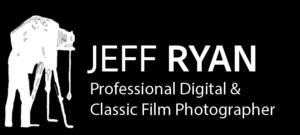OTTAWA PROFESSIONAL PORTRAIT PHOTOGRAPHER BLOG RYAN STUDIO / EDUCATIONAL PHOTOGRAPHY ARTICLE-“HOW TO EMPLOY-USE SHUTTER SPEEDS”/ SERVING / KANATA / STITTSVILLE / NEPEAN / BARRHAVEN / MANOTICK / ORLEANS
MARCH, 2021
“CAMERA CORNER”—PHOTOGRAPHY ARTICLE/COLUMN-WORKSHOP / PREPARED BY JEFF RYAN PHOTOGRAPHY OTTAWA/RYAN PORTRAIT PHOTOGRAPHY STUDIO/ LANDSCAPE / NATURE PHOTOGRAPHER/TEACHER/ INSTRUCTOR, SERVING THE REGIONS OF OTTAWA /KANATA /ORLEANS /STITTSVILLE, ONTARIO
Rapid focal and leaf operated shutter systems have truly liberated photographers’ picture-making abilities. If you own a 35mm camera, you most likely have a product that comes equipped with a focal plane shutter. If, perhaps, you own an older box style camera manufactured many years ago, your camera operates on a leaf shutter system-(for the most part, all current box style cameras still come equipped with a standard leaf shutter). So what is the difference in these products and what are their advantages and disadvantages? The most practical way to differentiate between these two systems is that a focal plane shutter travels from one side of the film chamber to the other while the exposure is produced; a leaf shutter system operates in a more circular fashion, opening from the centre of the lens at the first part of the exposure, then travelling to the outside edges but always in a circular movement.
The greatest advantage of the leaf operated system over many years, is that it enables you to use higher shutter speeds when using electronic flash in comparison to cameras containing a somewhat limited focal plane system. Both systems work well, but you will find that most professional medium-and large-format cameras come equipped with leaf shutters for the discriminating professional. Focal plane shutters have a tendency to be smaller and more compact, therefore perfectly suiting the 35mm market. As most people in the beginner stages of photography have 35mm cameras which contain a focal plane shutter, it is this type I’ll be referring to from now on, until we get into the topic of electronic flash.
One of the many reasons camera manufacturers include approximately 15 shutter speeds on any given camera is to give photographers the maximum amount of freedom in creating any style of photograph they choose to produce. This range of speeds enables a photographer to produce imagery that is either razor sharp to one of implied movement. So how does a person make a correct decision as to which speed is the correct one for each scene they are photographing? The answer is for the most part, self explanatory. Ask yourself what type of effect you are trying to convey in each image you create. If, perhaps you are trying to suggest action or imply movement, then a slower shutter speed will allow objects in your viewfinder enough time to travel through the frame implying motion; a faster speed has a tendency to freeze every object rendering the scene with complete sharpness. Often when photographing outdoors you may be forced into using shutter speeds that you were not expecting to use. As the day progresses, light levels diminish forcing you to use slower shutter speeds and wider apertures than what you may be accustom to, which are now necessary to properly expose your film/digital files.
If you are a photographer who frequently hand holds your camera for the majority of your exposures, a good suggestion that will help you ensure repeatable sharpness in your completed imagery is as follows. Select a lens you use often and affix it to your camera. Let’s say for discussion purposes, that you have chosen the basic lens that often comes equipped with a 35mm camera, the 50mm standard lens. If you examine your shutter speed dial, you have to determine what the first shutter speed listed on the dial itself is higher than the indicated focal length of the lens that you are using. For instance; the shutter speeds indicated on your camera often appear in this particular order: 1 second, ½ sec, 1/4, 1/8, 1/15, /1/30, 1/60, 1/125, 1/250 etc. The correct choice in this example would be to set your camera at the 1 /60 sec. indicator. To elaborate further; the idea behind this rule is that the next highest shutter speed marking on your dial will for the most part ensure relatively good sharpness if you are hand holding your camera. By using this “higher shutter speed setting”, photographers have had very good success rates of producing sharp, hand held, predictable photographs. If using an 80-200mm lens, you would set your camera’s shutter speed at the 1/250 second setting. If using a 300mm lens, you would use the 1/500 sec. setting on the conventional shutter speed dial.
I will continue with this topic of the shutter in my next column and will refer to other techniques that control shutter related properties such as exposure, plus one other area that is often overlooked–the proper battery for your camera.
OTTAWA/KANATA/STITTSVILLE PHOTOGRAPHER, JEFF RYAN/RYAN PORTRAIT PHOTOGRAPHY STUDIO
Email—jeffryan@storm.ca
613.599.5363
www.jeffryan-photography.com
